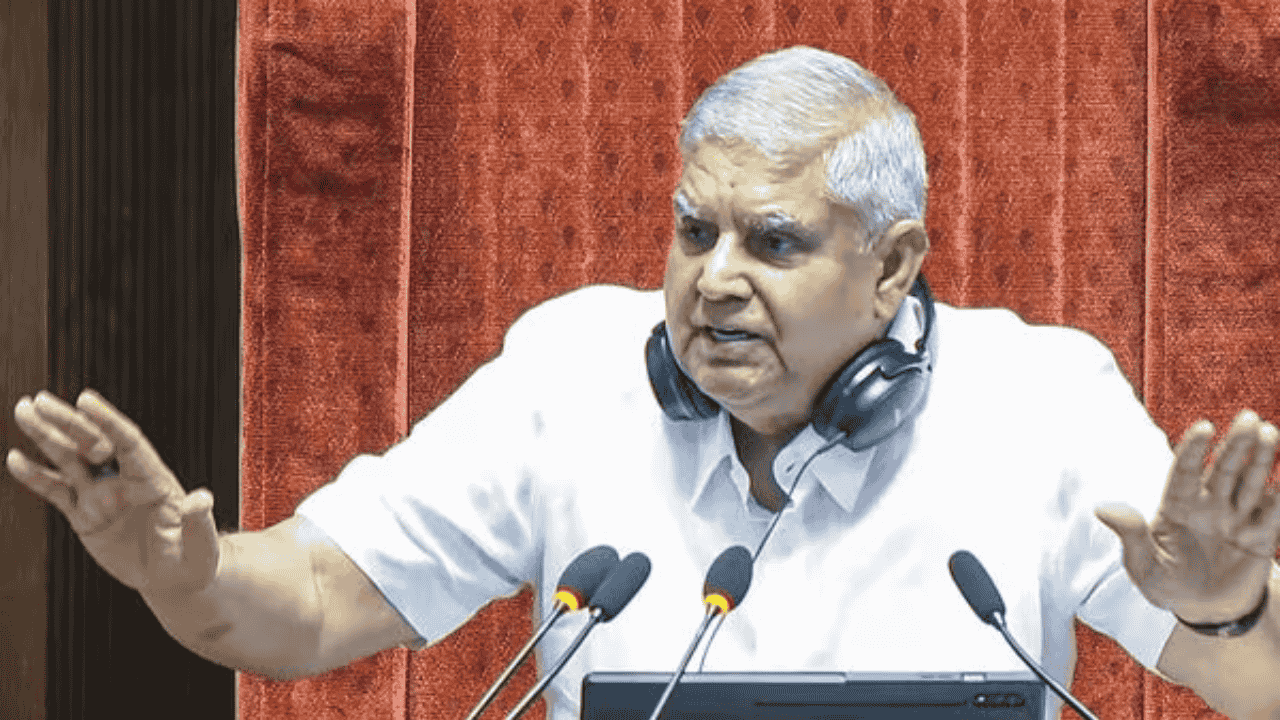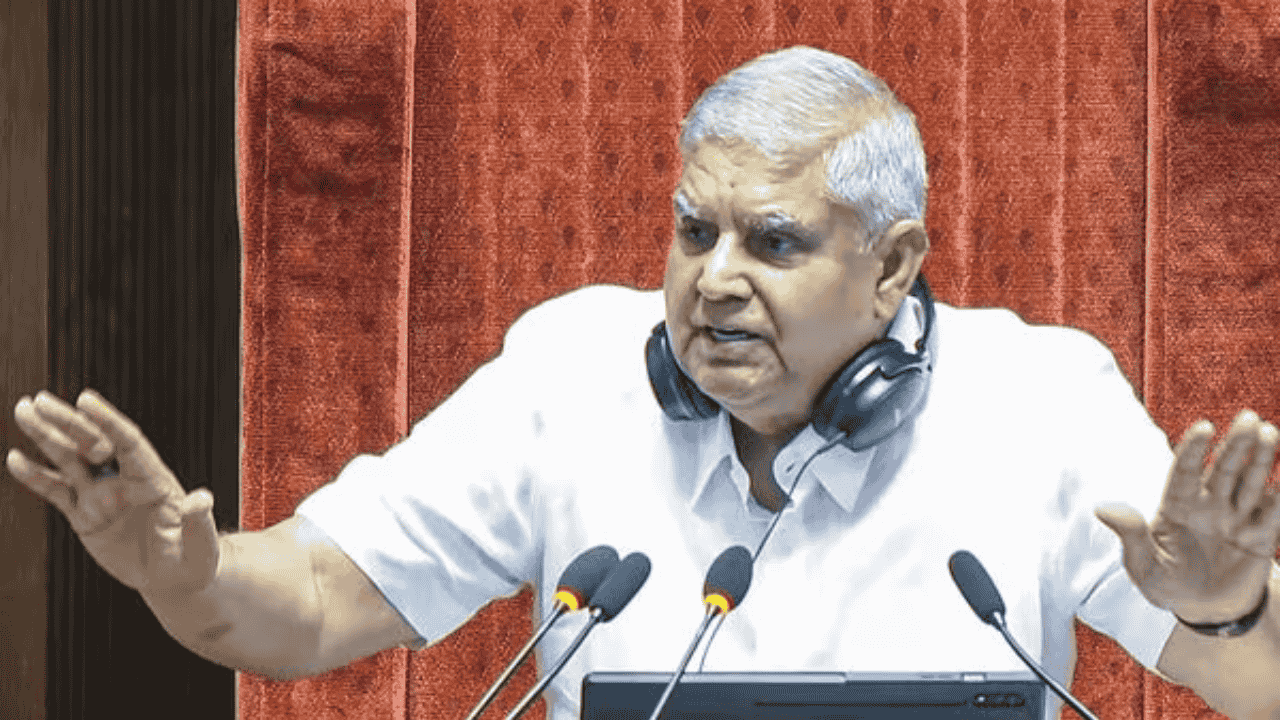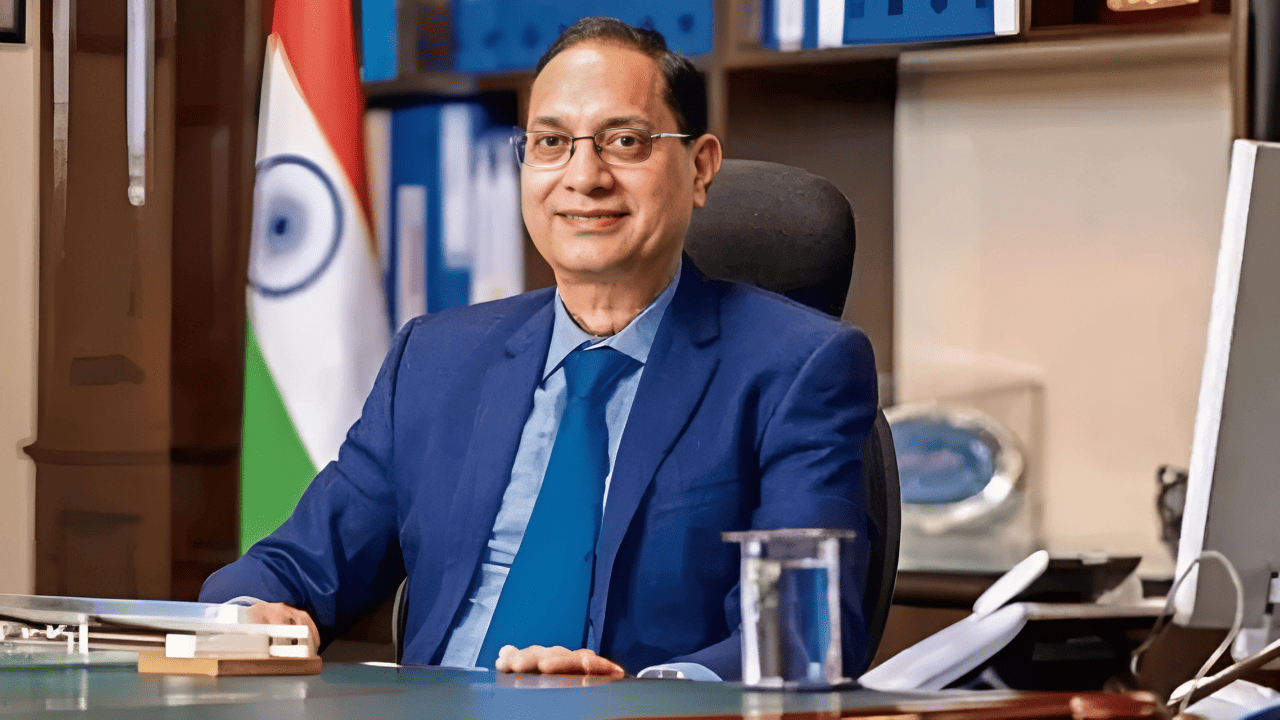Vice-President Jagdeep Dhankhar resigns due to health reasons; constitutional provisions under Articles 67(a) and 68 invoked. Election to be held within 60 days. Important for UPSC and competitive exams.
Introduction
On 21 July 2025, Vice-President of India Jagdeep Dhankhar submitted his resignation, citing health reasons as advised by his doctors. Notably, he was present in the Rajya Sabha earlier that morning, where he directed procedural action on a motion of impeachment against a high court judge.
His resignation was sent in writing to President Droupadi Murmu and took effect immediately, in accordance with Article 67(a) of the Indian Constitution. This marks the third time in Indian history that a vice-president has resigned before completing the term.
As per constitutional mandate, Deputy Chairman of Rajya Sabha Harivansh Narayan Singh has assumed the role of Acting Chairman. The vacant Vice-President position must be filled within 60 days through an election process.
Chronology of Events
21 July 2025, 09:45 AM: Vice-President Dhankhar attends Rajya Sabha; directs action on impeachment motion against a High Court judge.
1:00 PM – 4:30 PM: Business Advisory Committee meets; speculations of resignation spread.
7:10 PM: Dhankhar submits resignation to President, citing health concerns.
7:35 PM: Resignation accepted by President Droupadi Murmu, effective immediately.
8:00 PM: Deputy Chairman Harivansh Narayan Singh takes over as Acting Chairman of the Rajya Sabha.
Constitutional Provisions: Resignation and Vacancy
| Article | Subject | Key Provision | For Exams |
|---|---|---|---|
| 67(a) | Resignation of the Vice-President | Vice-President may resign anytime by submitting a signed written letter to the President. It becomes effective immediately. | Polity GS-II |
| 68(2) | Filling Casual Vacancy | Election for filling vacancy must be held “as soon as possible” (interpreted generally as within 60 days). | Polity GS-II |
| 66(1) | Election Process | Electoral College: 788 MPs; election by Single Transferable Vote (STV) system. | Electoral System |
| RS Rule 8-A | Chair in Absence of VP | Deputy Chairman discharges VP’s functions as ex-officio Chairman. | Parliamentary Rules |
Article 67(a): Process of Resignation
Under Article 67(a), the Vice-President can resign by writing under his hand to the President. The moment the letter reaches the President, the office stands vacated—no formal acceptance is required.
Article 68(2): Election to Fill Vacancy
This clause directs that an election to fill the vacancy must be conducted “as soon as possible.” While the Constitution does not specify a strict deadline, it is practically interpreted as within 60 days as per Election Commission guidelines and past precedents.
Article 66: Election Mechanism
Electoral College: 788 Members of Parliament — 543 from Lok Sabha and 245 from Rajya Sabha (includes nominated members).
Voting System: Single Transferable Vote (STV) under the proportional representation system.
Nomination: Each candidate must submit nomination supported by 20 proposers and 20 seconders.
Deposit Amount: ₹15,000.
Who Presides Over Rajya Sabha Now?
With the Vice-President’s post vacant, Deputy Chairman Harivansh Narayan Singh takes over as Acting Chairman of the Rajya Sabha, ensuring no disruption in parliamentary proceedings.
Past Vice-Presidents Who Resigned Mid-Term
| Year | Vice-President | Reason | Outcome | Exam Relevance |
|---|---|---|---|---|
| 1969 | V. V. Giri | Contested Presidential Poll | Vacant for approx. 34 days; Gopal Swaroop Pathak elected | First mid-term resignation |
| 2007 | Bhairon Singh Shekhawat | Contested Presidential Poll | Vacancy lasted ~21 days; Hamid Ansari elected | Highlights STV process |
| 2025 | Jagdeep Dhankhar | Health reasons | Election process underway | Most recent case |
Health Reason or Political Undertone?
While Dhankhar has cited health reasons and medical advice, some political observers believe institutional strain—particularly over judicial appointments and legislative confrontations—may have contributed. This adds context relevant for ethics and GS-II analysis.
Expected Election Schedule (Tentative)
| Stage | Tentative Window | Authority | Notes |
|---|---|---|---|
| ECI Notification | By 31 July 2025 | Election Commission | Initiates the process |
| Filing of Nominations | 5 – 14 August 2025 | Returning Officer | Requires 20 proposers/20 seconders |
| Scrutiny/Withdrawal | 16 – 19 August 2025 | Returning Officer | Verification phase |
| Polling Day | 30 August 2025 (Tentative) | Parliament House | MPs cast preference votes |
| Vote Counting | Same Day | Returning Officer | Quick result announcement |
| Oath Ceremony | Within 3 days | President of India | Elected VP takes office |
Note: State MLAs do not participate in VP elections, unlike the Presidential polls.
Comparison: Vacancy of Vice-President vs. President
| Aspect | Vice-President | President |
|--------------------------|------------------------------|--------------------------------------+|
| Time for Election | As soon as possible (~60 days) | Within 6 months (as per Article 62) |
| Acting Role | Deputy Chairman of RS | Vice-President acts as President |
| Electoral College | Only MPs (788) | MPs + MLAs (>4,800) |
| Value of Vote | Equal (1) | Weighted (population-based formula) |
UPSC GS-II Relevance
Key Themes
Separation of Powers: Dhankhar’s tenure involved active participation in legislative-judicial debates.
Federalism: VP is elected only by MPs; contrast this with the President who is elected by MPs and state MLAs.
Eligibility & Conditions: Article 66(4) restricts VP from holding office of profit; can be tested in Prelims.
GS-IV (Ethics) Perspective
His voluntary resignation on medical grounds raises questions of ethical responsibility vs. public duty. You could link this to Article 51-A of the Constitution (“strive towards excellence in all spheres”).
Quick Revision Facts – Useful for Prelims
Resignation Article: Article 67(a)
Minimum Age for VP: 35 years
First Resigning VP: V. V. Giri in 1969
Electoral College Size: 788 MPs
Election Timeline: Within 60 days from vacancy
Likely UPSC Mains Questions
“The constitutional framework ensures continuity in legislative leadership even in the event of sudden vacancies.” Discuss in light of the 2025 Vice-Presidential resignation.
Compare the electoral processes of the President and Vice-President in India. Why is there a difference?
Structure your answers using the Introduction–Body–Conclusion (IBC) format and cite relevant constitutional Articles.
Why this matters for your exam preparation
Static Knowledge: Understand Articles 66, 67, and 68 with real-world relevance.
Current Affairs Integration: This live case adds depth to your GS-II answers.
Essay/Interview Edge: Discuss ethics in office, institutional interplay, and executive-legislative dynamics.
Prelims Practice: Match dates, numbers, and provisions — often tested directly.
Stay updated with Atharva Examwise for daily curated current affairs and smart exam-oriented insights for UPSC, State PSCs, SSC, CDS, and beyond.







